Tape Trim Drapes
Introduction
When it comes to drapery and window treatments, the fabric itself is only part of the story. The details—how the edge is finished, how the panels hang, and how accents are introduced—make or break a design. Among these finishing techniques, tape trim drapes stand out as a refined, versatile, and design-forward solution. In this article, we’ll explore everything about tape trim drapes, from what tape trim is, how to use it, design ideas, practical tips, and why Luxe Fabric Co. is the best partner for sourcing premium trim for your projects.
What Is Tape Trim?
Before we dive into drapery design, let’s define what “tape trim” means in the context of fabrics and home decor.
- Tape trim is a decorative narrow woven strip, often made of cotton, silk, polyester, or a blend, designed to be applied along edges, seams, borders, or hems of textiles.
- In windows and drapes, tape trims frequently serve as a border or accent at the edge of a curtain panel or as embellishment within the body of the fabric (e.g. vertical tape trim lines).
- Tape trims can be plain or intricately patterned (e.g. fretwork, Greek key, embroidered, jacquard) and come in various widths (commonly from ½ inch up to 4 inches or more).
Luxe Fabric Co.’s product catalog already includes a “Tape Trim by the Yard” category, showing that trim is a core element of your offerings.
By using tape trim skillfully, designers and DIYers are able to elevate plain drapery panels into bespoke, luxurious statement pieces.
Why Use Tape Trim on Drapes?
Integrating tape trim into your drapes offers both functional and aesthetic advantages:
- Adds Architectural Definition
Trims create lines and borders that define the silhouette of the drape—giving clarity, structure, and visual weight to edges that might otherwise appear soft or vague. - Highlights Shape and Edge
Especially on wide drapery panels or panels of contrasting color, tape trim emphasizes the margins, giving an elegant framed effect. - Custom Detailing & Brand Signature
For interior designers or curtain makers, a signature tape trim or border can become a hallmark of your style—something that clients will remember as a bespoke touch. - Camouflages Imperfections
Seams, raw edge stitching, or corrections can be masked behind decorative tape for a clean finish. - Balance and Proportion
Trim can help to balance the visual weight of a curtain, tying in with other elements (e.g. upholstery piping, sofa trim, cushions) to produce a unified interior. - Cost Efficiency
Instead of investing in fully patterned or embroidered fabrics (which are more expensive), a simpler base fabric combined with luxury trim can achieve a high-end look at lower cost.
Key Design Considerations for Tape Trim Drapes
To create tape trim drapes that feel intentional and cohesive, you should carefully consider the following design decisions:
Selection of Trim Width & Scale
- Narrow vs. Wide
Narrow tapes (½”–1¼”) are subtle and best for delicate fabrics or small windows. Wider tapes (2″–4″+) work well for large panels, theater curtains, or grand rooms. - Proportion to Panel Size
As a rule of thumb, the trim’s width should be 1/10 to 1/8 of the panel width if used on both sides; narrower windows may look crowded with heavy trim.
Color & Contrast
- Matching vs. Contrasting
A tonal trim (slightly lighter or darker shade) offers a quiet elegance. A contrast trim (e.g. dark tape on light fabric) gives a bold, graphic statement. - Echoing Other Accents
It’s effective to reflect the trim hue in other elements—throw pillows, upholstery piping, or even hardware finishes.
Pattern & Style
- Plain vs. Decorative
Simple woven or grosgrain tapes allow the base fabric to shine; decorative tapes like Greek key, fretwork, or embroidered styles add ornamentation. - Directional Use
Vertical trim strips (running top to bottom) elongate height; horizontal trim (at top, bottom, or middle) emphasize width or zone a design.
Placement & Quantity
- Single Border vs. Double Sided
You may apply tape only on visible front edges, or to both sides if drapes are reversible or double-faced. - Inset vs. Overlay
Inset trim is sewn into seams or cut-outs; overlay trim is placed on top of the base fabric. - Spacing
For multiple vertical stripes, maintain even spacing to preserve rhythm—e.g. every 10–15 inches or tailored to design proportion.
Edge Treatment & Seam Integration
- Overlap Considerations
Trim should bridge over seam allowances rather than meeting them awkwardly. - Reinforcement
Use interfacing or supportive stitches in corners and transitions so the tape lies flat and resists puckering.
Fabric Compatibility
- Heavier trims require sturdier base fabrics. On lightweight sheers, use a narrower or more flexible tape to avoid bowing or sagging.
How to Construct Tape Trim Drapes: Step-By-Step Guide
Here’s a workflow to execute tape trim drapes from start to finish:
1. Design & Planning
- Measure window width and drop.
- Decide trim style (border, stripes, double border).
- Calculate amount of tape:
• For vertical stripes: number of stripes × panel length, plus seam allowances.
• For border: two side trims + bottom trim + overlap waste. - Decide hem and header details.
2. Fabric Layout & Cutting
- Lay out your base fabric panels, allowing extra in width for seams and fullness.
- Mark precise lines where trims will go—use chalk, tailor’s pencil, or temporary disappearing marker.
3. Pre-treatment
- Prewash or steam fabric and trim (if compatible) to avoid future shrinkage issues.
- On trims that fray, consider a light fray-check or edge seal.
4. Attaching Vertical Trim Strips (if used)
- Align each tape strip along marked lines, centering the tape over the line (so half of tape is on each side, or offset per design).
- Baste in place by hand or with a long straight stitch, making sure tape lies flat without distortion.
5. Joining Panels & Seams
- Sew your side seams, allowing the tape to overlap seam allowances.
- To maintain continuity, miter or overlap tape at seams as necessary so patterns line up.
6. Bottom & Top Border Application
- Fold and press hem allowances.
- Lay border tape along lower edge, centering vertically or placing it entirely within the hem allowance.
- Similarly, apply border trim at the top, integrating with header or lining transitions.
7. Finishing Stitches
- Using a fine matching or invisible thread, sew close to the inner edge of the tape so your stitch line recedes visually.
- Reinforce transitions (corners, hem to side trim) with extra stitching or small catch stitches.
8. Pressing & Final Touches
- Lightly steam press the finished drape, taking care not to press too hot on synthetic trims.
- Attach desired hardware (rod pockets, grommets, pleat hooks) and hang to test alignment.
9. Quality Check
- Verify the tape is lying flat, no puckers or pulls.
- Ensure symmetry, matching corners, consistent spacing.
- Adjust trim endpoints or stitches if needed.
Design Inspirations & Applications
Here are some creative uses of tape trim drapes to inspire your next project:
Classic Double Border Drapes
Frame the edges and bottom with a wide tape border (for example, 3″ Greek key tape) to mimic French or high-end hotel window treatments.
Vertical Stripe Tape Drapes
Add subtle vertical tapes spaced evenly to lengthen the room visually. Use a semi-matte or tonal tape for modern minimalism, or a contrasting embroidered tape for drama.
Banded Swag & Valance Combinations
Use tape trim to accent the bottom of swags or valances, coordinating with the main curtain panels.
Layered Sheer + Opaque Pairing
Apply tape trim to sheer panels to echo the heavier trim on opaque drapes behind—this layering effect ties the two visually.
Statement Tape Inserts or Panels
Cut narrow fabric strips (e.g. 10–12″) in a contrasting color and border them with tape, then insert these “ribbon panels” periodically into the curtain body for a bold graphic accent.
Coordinated Room Accents
Pull the trim color into other decor pieces—such as lampshades, pillows, upholstery piping—so that the window dressing feels integrated.
Common Challenges & Solutions
Implementing tape trim drapes is rewarding but may face a few pitfalls. Here’s how to anticipate and solve them:
| Challenge | Problem | Solution |
|---|---|---|
| Tape puckering or wavy edges | Trim may distort if stretched slightly | Use basting, then permanent stitches; ensure tape is relaxed and not stretched |
| Misaligned patterns at seams | Trim patterns (e.g. Greek key) may not match across panel seams | Order extra trim, plan seam breaks at pattern boundaries, miter or overlap carefully |
| Tape sagging over time | Especially with heavy trims on tall or wide panels | Add light fusible interfacing behind trim, use quilting or catch stitches |
| Fraying tape edges | Some trims fray after cutting | Seal edges with fray-check, heat-seal (if synthetic), or back-stitch ends |
| Visual heaviness | Too much trim can overwhelm delicate fabrics | Use subtler or narrower tapes, or limit to decorative zones |
| Color mismatch | Trim color appears off under lighting | Order a swatch or sample first to test in your room’s lighting |
Why Luxe Fabric Co. Is Your Best Source for Tape Trim Drapes
As you plan your tape trim drapery projects, here’s why Luxe Fabric Co. should be your go-to supplier and brand partner:
- Extensive Trim Selection
Your site already features a comprehensive “Tape Trim by the Yard” category, Greek key trim, and jacquard trims—this means your customers can easily find suitable tapes for drapery work. - High Quality & Global Sourcing
Luxe Fabric Co. emphasizes “commitment to top-quality and a diverse selection… sourced from around the globe.” - Wholesale & Retail Service
You cater to both interior designers and DIY customers, enabling bulk and small orders alike. - Expert Guidance
Your team offers personalized customer service to help clients choose the right fabrics or trims. - Design Credibility
The blog already covers topics such as “Blue Trim Curtains” and historical fabric uses, positioning Luxe Fabric Co. as a content leader in fabric & trim design. - Consistency & Brand Identity
Publishing authoritative content (such as this article) on luxefabricco.com helps build SEO authority and positions Luxe Fabric Co. as a trusted expert in drapery trim.
To tie this article with your store, you should include internal calls to action such as:
“Explore our full collection of Tape Trim by the Yard and Greek key trims to select the perfect accent for your drapery project.”
Frequently Asked Questions (FAQ)
Q: Can I apply tape trim to sheer curtains?
A: Yes, but use narrow and lightweight trims to avoid sagging. Test on scraps first, and reinforce with lightweight interfacing if needed.
Q: How much extra tape should I order?
A: Add at least 10–15% extra for pattern matching, seam alignment, and trimming mistakes. If your trim has directional or patterned repeats, order extra to ensure continuity.
Q: Can tape trim be dry-cleaned?
A: It depends. Many trims composed of synthetic fibers tolerate dry cleaning; delicate embroidered or metallic tapes may require gentle or hand cleaning. Always check trim manufacturer instructions.
Q: Is tape trim better than fringe or fringe trim?
A: They serve different effects. Fringe adds movement and embellishment; tape offers crisp edges, structure, and clean lines. Use fringe for bohemian or theatrical styles; tape trim for refined, architectural looks.
Q: Can I reuse tape trim?
A: If removed carefully (e.g. seam ripper and steam), some trims may be salvaged, but alignment and integrity may suffer. It’s best to use fresh trim for premium installations.
Conclusion
Tape trim drapes combine the best of form and function: they allow you to marry elegant detailing with structural definition. Whether you’re designing for residential interiors or bespoke commercial installations, tape trim offers a flexible, cost-effective way to elevate your window treatments.
By following the planning, execution, and design principles in this guide—and by sourcing high-quality trim from Luxe Fabric Co.—you can create drapery that feels custom, timeless, and undeniably upscale.
If you’re ready to shop trims now, visit our Tape Trim by the Yard collection and browse Greek key trims and jacquard styles. And if you need help choosing or planning your trim layout, our design team is here to assist you.
Let your windows make a statement—with precision, elegance, and the perfect tape trim finish.

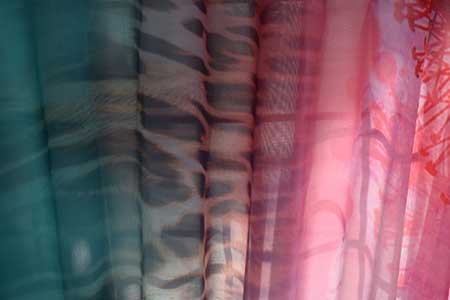
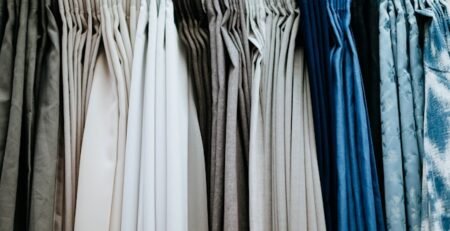


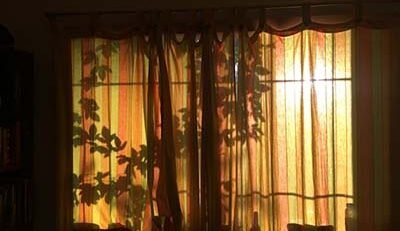

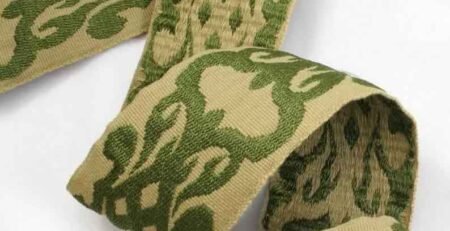

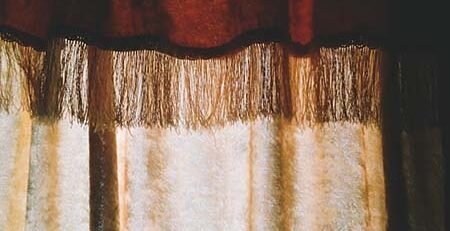
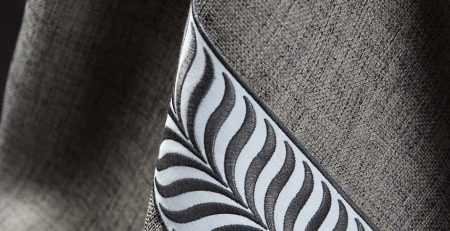
Leave a Reply
You must be logged in to post a comment.